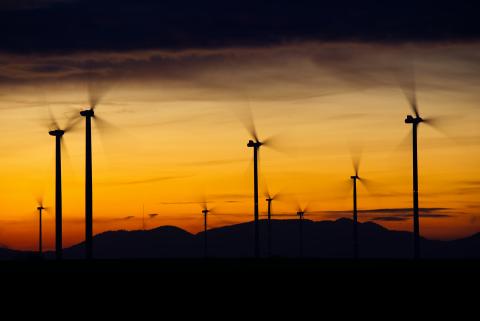China’s Appetite for Coal Continues to Slow as 2015 Is Looking More and More Like 2014
The AFR was among the publications that reported prominently last week on how Chinese coal consumption fell by 4.7 percent year-over-year during the first quarter of 2015. This drop of course is not happy news for the coal industry, but it is news, and big news at that. It’s of exceptional note in Australia because our economy is so heavily invested in coal and related rail and port infrastructure being a key global supplier.
The first-quarter data suggests a massive acceleration of a trend that emerged very powerfully in 2014, although traces of a slowdown in the rate of growth of Chinese coal consumption actually first appeared in 2012, when year-over-year growth halved from the 10 percent compounded annual growth rate recorded over the preceding decade.
This trend has legs, and here are three indicators illuminating the likely future of the Chinese coal market:
- China’s annual economic growth has slowed to 7 percent today from 8 to 10 percent, and is likely to continue to moderate slowly over the next decade. (The International Monetary Fund forecasts 6.8% in 2015 slowing to 6.3 percent growth in 2016). Less demand growth means less electricity growth.
- The ratio of electricity demand growth and real GDP growth in China is changing. Having average over a 1-to-1 ratio in the preceding decade, this has fallen to a 0.5-to-1 ratio as electricity demand grew by 3.8 percent, much slower than GDP, which was up 7.4 percent. This step-down in the ratio is a reflection of greater energy efficiency and of a structural change in the economy toward less electricity-intensive sectors. If this trend continues—and there’s no reason to believe it won’t—it means a faster transition away from coal. (The AFR reports, incidentally, that China electricity growth amounted to only 0.8 percent year-over-year in the first quarter of 2015.)
- China is investing hundreds of billions in diversifying its electricity generation away from coal, turning increasingly to hydro, nuclear, gas, wind and solar. The AFR itself reports that Chinese hydro-electricity production was up an additional 10 percent year over year during the first quarter of this year. While this is seen as a surprise to some skeptics—the AFR included—it shouldn’t be. China is undertaking the largest build-out of hydro-electricity the world has ever seen, doubling its capacity to 400 gigawatts by the end of this decade. Likewise, a world leading wind-power program is on track to more than double China’s total installed wind farm base to over 200 gigawatts by 2020 as well. For solar, the acceleration of installs continues, with the first quarter of 2015, seeing 5.0 gigawatts installed, putting China well on track for its recently upgraded solar-generation target of 17.8 gigawatts for this year alone.
Given that China will inevitably and naturally seek to protect Chinese jobs over Australian jobs—or any jobs anywhere else—China has hammered away at coal imports. For the first three months of 2015, coal imports are down 42 percent year on year, a massive acceleration from the 11 percent decline reported for all of 2014. Peak coal consumption for China appears to have occurred in 2013, three years ahead of schedule even by IEEFA’s expectations.
What makes this trend so globally important is that:
- China represents 50 percent of the world’s consumption of coal and accounted for more than 20 percent of seaborne coal demand in 2014.
- India is looking to replicate China’s achievements in the transformation of its own electricity system as outlined in a government policy plan that emerged in 2014. India is set to account for 20 percent of the world’s seaborne thermal coal demand in 2015, and the scenario that sees the world’s two largest import markets collapse to zero by 2020 is rapidly gaining credibility.
It’s in Australia’s best interest to get serious about the realities facing global coal markets and to plan in particular for the structural decline of seaborne coal market.
Which means it’s not in our national interest to persist in trying to expand Australia’s coal industry by way of projects like the proposed development of the Galilee Basin. The Galilee project is being pushed heartily by the Indian-based Adani Group and the government of Prime Minister Tony Abbott in the vainglorious hope of building one of the world’s biggest new coal mines—but this comes at a time when the seaborne market is already drowning in excess supply.
What makes more sense for Australia’s national industry policy is to protect our existing coal-mining industry and allow time for a smooth transition to the inevitable low-carbon future to come.
A build-out of the Galilee project would only run other Australian thermal coal mines out of business, disrupt local economies and stunt the economic diversification of our country.
Tim Buckley is IEEFA’s director of energy finance studies, Australasia.











